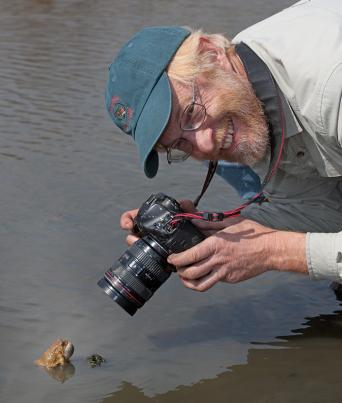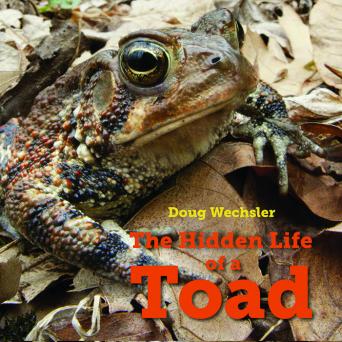Exploits of Local Toads Make Good Reading
Male toad trills float in the air, audible from The Backyard at Weavers Way Chestnut Hill. Breeding season is here for these intriguing amphibians. As an author of children’s books and a photographer, I took on the project of revealing the secrets of our warty friends in “The Hidden Life of a Toad” (Charlesbridge Publishing, March 2017).
Working for the Academy of Natural Sciences, I have traveled to tropical forests around the world to photograph birds. On these trips I also had a chance to observe many different species of toads. A beautiful, green stub-footed toad that I photographed in 1988 was one of the last of that species recorded in Ecuador. That group of colorful toads has suffered many extinctions due to a combination of climate change and a microscopic fungus.
So far, our local American Toad, one of 22 species found in the United States, have proven themselves to be survivors. They remain common even in parts of the city, especially the Schuylkill Center and the Wissahickon.
The male’s trilling helps lure in the females. Sometimes a male will find a female before she even gets to the pond and climb onto her back. Holding on with his muscular arms, he gets a free ride to the water. If he is successful in fending off rival males, he will fertilize the eggs as the female lays them in two long strings — all 10,000 of them.
The motivation to write this book came nine years ago. My wife, Debbie Carr, then head of environmental education for Philadelphia’s parks, got a call from activist Lisa Levinson, who noticed many toads dying on Port Royal Road in Upper Roxborough. Debbie and I went to investigate. We sat above the old Roxborough Reservoir, eating Chinese takeout and waiting for dusk. The long trills of male toads confirmed that the reservoir was the toads’ destination. So Lisa, with the help of Debbie and many others, set up “Toad Detour,” a program to keep cars from running over the toads as they make their spring breeding trek. It continues to this day, now run by the Schuylkill Center.
Photographing tiny toad eggs and tadpoles is not easy. I built a tiny aquarium for the photo sessions. Then I had to get the eggs the day they were laid to follow the sequence of development. I wanted to show how tadpoles are born helpless, with no eyes or mouth, unable to swim, and how they change over time.
I wrote this book to inspire children to appreciate the natural world, but I have noticed that virtually everyone, adults included, learns something new from it. To find out more about toads or order a signed copy of my book, visit my website, www.dougwechsler.com.
Doug Wechsler is a Weavers Way working member, naturalist and author of 23 books for children.


